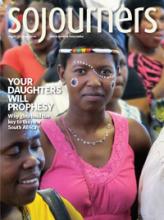In 1999, I was in the midst of launching Interfaith Youth Core, the organization I lead today. One day I received an email from a young man in Jordan named Anas. He wrote, "I found your website, and I want to start an interfaith youth project."
We quickly fell into a rhythm, where I would send him our latest curriculum on interfaith service projects and he would send me photos of the projects he ran, which we would post on our website. Anas and I finally met in person when I traveled to Jordan five years later. I was there on other business and decided to look him up in my spare time, fully expecting that he had gone onto other things.
He both surprised and inspired me. He brought the latest photos on interfaith projects he was leading across the Arab regions and around the Mediterranean, and a copy of the book he had written; he told me about his plans to run for parliament.
I asked him, "Tell me how you got here." And he replied very simply, "You emailed me back."
The biggest thing Anas taught me was not the power of the Internet to connect a globalized world (though this is true) or the bridges that are built through interfaith action (though this is also true). Anas taught me that the fate of the 21st century was going to be decided not just by government-to-government relations, but by civic leader-to-civic leader relations in a global context.
President Obama affirmed this in his May speech addressing the Middle East and North Africa, saying: "The greatest untapped resource in the Middle East and North Africa is the talent of its people."
Read the Full Article
